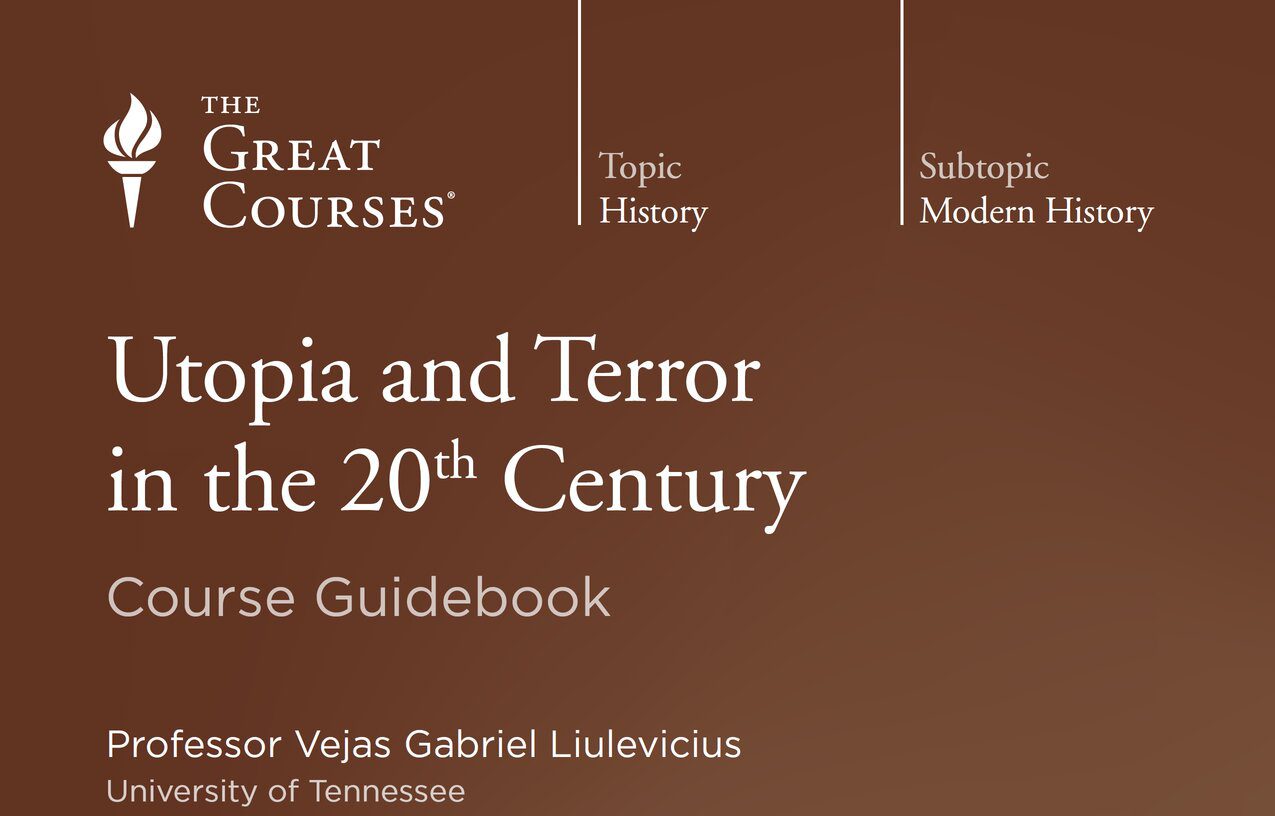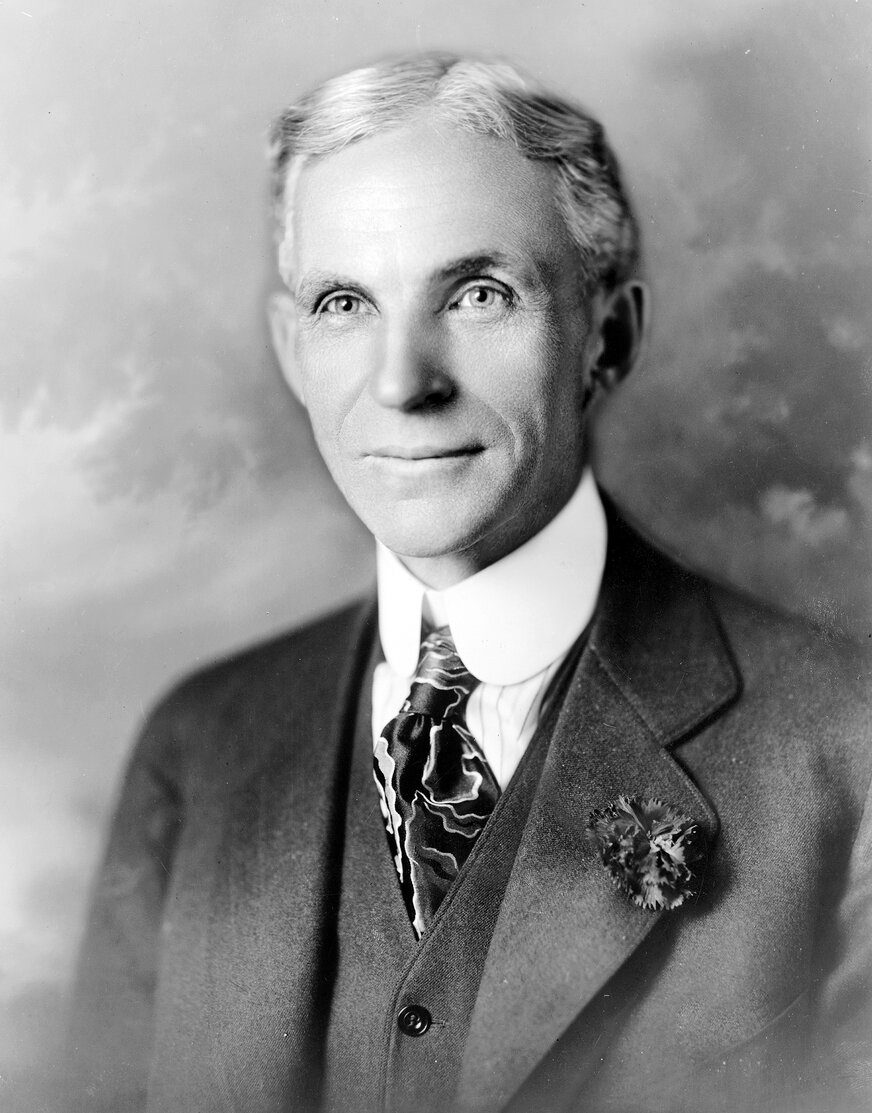“Those who do not remember their past are condemned to repeat their mistakes.” – George Santayana
History does not usually repeat itself but it often rhymes. The 20th century was raveled by two world wars, the great depression, the Spanish flu pandemic, nuclear weapon proliferation, the holocaust, mass genocides, ethnic cleansing & stereotyping, decolonization, the cold war, the fall of the berlin wall, Rwanda Genocide among other significant changes and events.
A century that produced leaders such as Benito Mussolini, Adolf Hitler, Winston Churchill, Stalin, Lenin. Mao, FDR, JFK, Woodrow Wilson, Eisenhower, and conflicting ideologies & revolutions such as the French Revolution, the Industrial Revolution, Imperialism, Feudalism, Fascism, Nazism, Communism, Marxism, Capitalism, Totalitarianism, etc. The century showed man’s capacity for inhumanity towards each other.
Why was the 20th century so violent?
The Great Courses Class: “Utopia and Terror in the 20th Century” examines a fundamental question of our times: Why was the 20th century so violent? This terrible century saw bloodletting on an unprecedented scale. Scholars estimate that around the globe, wars cost more than 40 million lives, while government-sponsored persecutions, mass murder, and genocide accounted for 170 million victims.
Scholars estimate that around the globe, wars cost more than 40 million lives, while government-sponsored persecutions, mass murder, and genocide accounted for 170 million victims.
Political scientist R. J. Rummel of the University of Hawaii calculates that worldwide during the 20th century, wars and civil wars cost about 38 million lives, while government sponsored persecutions, mass murder, and genocide accounted for about 169 million victims.
About Vejas Gabriel Liulevicius
Dr. Vejas Gabriel Liulevicius is Lindsay Young Professor of History and Director of the Center for the Study of War and Society at the University of Tennessee, Knoxville. He earned his B.A. from the University of Chicago and his Ph.D. from the University of Pennsylvania. After receiving his doctorate, Dr. Liulevicius served as a postdoctoral research fellow at the Hoover Institution on War, Revolution, and Peace at Stanford University.
Professor Liulevicius has won many awards and honors, including the University of Tennessee’s Excellence in Teaching Award and a National Endowment for the Humanities Fellowship. At the university he teaches courses on modern German history, Western civilization, European diplomatic history, Nazi Germany, World War I, war and culture, 20th-century Europe, nationalism, and utopian thought. Dr. Liulevicius has published numerous articles and two books: War Land on the Eastern Front: Culture, National Identity, and German Occupation in World War I and The German Myth of the East, 1800 to the Present.
Utopia and Terror
The aim of achieving a perfect society was supposed to justify violent means. Utopia refers to the perennial human impulse to imagine a flawless society, free of contradictions and conflicts. Terror designates the deliberate and systematic use of fear and violence to achieve political ends.
The 20th century saw the rise of dynamic and brutal ideological regimes that promised total solutions. The four key elements of such modern regimes are:
(1) masses,
(2) machines and mechanisms for control,
(3) the seizure of the state by mobsters (political criminals), and
(4) ideological master plan
Utopianism: abiding human trait of visualizing comprehensive social solutions
Terror is a method in the pursuit and wielding of power, denoting organized use of violence for political ends. Terror seeks to instill fear and panic, aiming at forcing transformation
Terror implies deliberate and organized targeting of civilians, noncombatants, innocents.
The linkage of utopia and terror: ideology.
- Utopia and terror have been linked in the history of the 20 century because plans for perfection encountered either passive or active resistance.
The rule of ideological regimes. : Means and Machines
The means.
- Masses of people were mobilized in the rise or consolidation of such regimes, exploiting societies in turmoil, full of uprooted and atomized individuals. Humans caught up in ideological movements were often uprooted, members of “lonely crowds,” seeking escape in promises of belonging, anonymity, and equality
- Machines used by mass movements were not only machines in the literal sense, but also the apparatus of modern technology, media for propaganda, and bureaucratic state organization, especially the police and secret services
The motives.
- Mobsters constituted the movement’s elite, gathered into organized conspiracies to achieve political power, and often using criminal methods inspired by gangster bosses.
- Master plans were ideologies championed by mass movements, total blueprints based on ideas, promising utopia as an outcome, with comprehensive visions of a future society. They were not necessarily inflexible and could be adapted to changing conditions, while still claiming to be infallible, but remained fixed on their vision of the imagined future.
Mass movements were able to exploit fears and mobilize confidence on a scale that enabled crimes of a magnitude never witnessed before.
The political revolution of the masses.
Enlightenment ideas.
- At the end of the 18th century, revolutions broke out: in 1776 in the American colonies and in 1789 in France. Though each had many disparate causes, new ideas of the Enlightenment informed the thinking of the revolutionaries.
French Revolution
- King Louis XVI gathered an Estates-General in 1789 to approve new taxation, but instead, it developed a momentum of its own, with representatives of the common orders gaining new confidence and making new demands.
- Representatives declared themselves a National Assembly and resolved to write a constitution. When the king tried to halt them, the Paris mob intervened by storming the Bastille fortress on July 14, 1789, bringing royal authority down with it.
Industrial Revolution of Machines.
- Industrialization had important consequences for society and politics, remaking physical landscapes of Europe and, later, other parts of the globe and disrupting traditional ways of life.
Engineers as heroes.
- A cult of the heroic engineer rose up worldwide to celebrate their very visible accomplishments: the Suez Canal, the Panama Canal, the American Transcontinental Railroad.
Science applied to Humans
- Social Darwinists and eugenicists approved the application of evolution to human society, to encourage the reproduction of the “fittest.”
- Such doctrines gave support to a modern variety of racism, a supposedly scientific racism, which sought to rank mankind into a hierarchy of unequal races. Traditional anti-Semitism (hatred of the Jews), earlier religious in motivation, was now also transmuted into a biological anti-Semitism.
Socialism
- A different imagined future was offered by Socialists, based on cooperation, rather than competition, in a society without private property.
Marxism
Marxism was presented as a science of revolution.
- Rejecting earlier thinkers as utopian Socialists, whose plans were not based on material realities, Marx’s doctrine was to be a scientific Socialism.
- Marxism brought together many contemporary concerns (evolution, science, mass politics) and exercised considerable appeal, promising keys to history and progress.
Marxism presented a tableau of human history, a dramatic narrative of progress, with starring roles played by toiling masses and machines. Individuals, by contrast, played a lesser role.
A vision of History
- All history was a history of class conflict. Through clashes (the dialectic process), society passed through phases of different modes of production.
- After slavery, then feudalism, mankind now reached the penultimate stage of history, capitalism.
- The working class (proletariat) confronted an owning class (bourgeoisie). The proletariat’s growing misery (emiserization) would drive it to revolution.
- After an international workers’ revolution, the end of history would ensue. Marx called this the “dictatorship of the proletariat,” in which the working class took over state power and abolished class distinctions.
The working class (proletariat) confronted an owning class (bourgeoisie). The proletariat’s growing misery (emiserization) would drive it to revolution.
Imperialism.
- In the 1880s and 1890s, European powers scrambled to grab colonies in Africa and Asia in a new “High Imperialism,” different from earlier colonialism. In 1901, most of the world was in the control of Europeans, while non-European nations, such as Japan and the United States, also sought territories.
Popular Social Darwinist thinking saw races as unequal, ranked in hierarchies. This made imperialism seem natural.
Colonial use of terror.
- Colonial rulers purposefully used terror in punitive expeditions against native peoples, euphemistically called “pacification.”
The natives’ assumed lower status was used to justify strategies of intense repression.
Concentration Camps
- Concentration camps were another innovation of colonial conflicts, established in 1896 in the Spanish attempt to suppress revolt in Cuba by cutting guerillas off from support among civilians, who were interned.
- The British also used concentration camps in the Boer War (1899–1902) against settlers of Dutch origin in South Africa, incurring many civilian deaths.
World War 1
- In 1914, a global war exploded, unleashed by an act of terrorism,the assassination of an Austrian archduke, a representative of the old regime. The next four years of modern industrial war caused an immense brutalization of Western civilization and a succession of ominous innovations: the first use of poison gas, bombing from the air, and the deliberate targeting of an entire people.
- The war began with great enthusiasm, which soon gave way to horrific trench warfare, pitting men against machines, as in the epic battles of Verdun and the Somme.
August madness of 1914
- In August 1914, news of war was met in European capitals with waves of enthusiasm.
- Although this enthusiasm was not universal, the spontaneous mobilization of the countries was great, reflected in impromptu propaganda and celebration.
The Unknown Soldiers: Nearly half of all the bodies of the dead in the war were never recovered and identified.
Total War
- Total war was the term coined to sum up the all-encompassing nature of this modern industrial war.
- Total war was a new kind of industrial war mobilizing not only soldiers but entire populations and economies. The nature of this all-encompassing conflict had repercussions for all spheres of life.
Mass armies were mobilized, with an estimated 70 million soldiers participating in the war worldwide, of whom 10 million would be killed.
Genocide: Armenian massacres.
- In 1915, between half a million and a million Armenians were killed in the Turkish Ottoman Empire.
- State officials feared that this Christian minority would collaborate with the Russian enemy to achieve independence and ordered their deportation.
Lenin
- Lenin was born Vladimir Ilyich Ulyanov (1870–1924); his father was a school inspector of the lower nobility. His youth was shaped by his brother’s 1887 execution as a terrorist. He rejected traditional religion, denounced liberalism, and turned toward radical, revolutionary politics with remarkable single-mindedness.
Russian Revolution
- On February 23, 1917 (March 8, by the Western calendar), the February Revolution broke out in Petrograd (formerly St. Petersburg).
- A new, democratically oriented provisional government took power. The tsar and his family were arrested.
- Lenin returned by special train from his Swiss exile, facilitated by the German High Command’s plan to destabilize Russia. Though not a German spy, as some charged, Lenin was happy to oblige.
World War 1 left 10 million dead and double that number wounded.
The Treaty of Versailles.
- At 1919 negotiations in Paris, a severe peace treaty with Germany was drafted.
- The treaty stripped German territories and colonies, placed strict limits on armed forces, required reparations, and forced Germans to accept responsibility for causing the war (the “War Guilt Clause”).
Russian Civil War
- From the summer of 1918, a complicated civil war broke out involving domestic opponents and outside forces.
- In this civil war of incredible ferocity and atrocities on all sides, 7 to 10 million died, five times as many as in the empire’s role in the world war. Some estimates for all Russian deaths by violence, hunger, and disease for 1918–1922 run to 20 million.
Some estimates for all Russian deaths by violence, hunger, and disease for 1918–1922 run to 20 million.
Fascism
- A new ideology grew out of the dislocations and traumas of the First World War was Fascism, first appearing in postwar Italy, but soon spreading its influence. Rejecting parliamentary democracy and liberalism, as well as Socialism and Communism, the Italian former Socialist Benito Mussolini organized paramilitary squads of “Blackshirt” thugs to wage political war in the streets, announcing their aim of a rejuvenated national community.
- Though Fascist ideology was often inchoate, in general, it opposed Socialism and Communism; opposed parliamentary government, democracy, and liberal ideas; and championed order, the power of the state over individuals, and an ethos of brutal heroism, to be realized through revolution and violence.
- When war broke out in 1914, after some initial hesitation, Mussolini broke with his Socialist comrades, who condemned the war, and argued that Italy should intervene. Like Lenin, he was convinced that the war was an opportunity.
Stripped of his editorship and expelled from the Socialist Party, Mussolini used French money to advocate war and fought in the war.
The Great Depression
- The Great Depression reached worldwide after 1929. In the United States, it was at its height in 1932, with a quarter of the workforce unemployed and industrial production sagging by 60 percent.
- Germany had likewise been badly hit, with six million unemployed in 1932. Both the Nazis and German Communists saw support grow.
The Great Depression reached worldwide after 1929. In the United States, it was at its height in 1932, with a quarter of the workforce unemployed and industrial production sagging by 60 percent.
Eugenics
- Eugenics (“the good birth”) claimed to solve social problems by regarding them as basically biological or medical issues. It was argued that the genetic stock of a society needed to be improved by vigorous state intervention.
- Eugenics achieved remarkable popularity worldwide and across the political spectrum. It included laws for the sterilization of the mentally ill in Sweden and the United States.
- In Germany, soon after coming to power, the Nazis would pass eugenics laws and enact ambitious programs.
Nazism
- The core ideas were racism and anti-Semitism. Hitler’s Social Darwinist worldview saw constant race war and struggle for Lebensraum (“living space”). Conscious application of racial strategies and embrace of natural conflict was presented as the key to history.
- Nazism posited a superior “Aryan” race, embodying creativity and health, juxtaposed with demonized stereotypes of Jews, depicted as parasites, contaminating influences, and eternal enemies. Germans were supposedly the purest remnants of original Aryans.
- Nazis promised the creation of a true racial unity, Volksgemeinschaft, or “people’s community.” This racial utopia would be achieved by purification and consolidation of Germany within, elimination of Jews, and aggressive expansion.
Special attention was given to young people. Ritual burning of books showed the downgrading of traditional humanistic education, replaced with induction of boys into the Hitler Youth for military training and girls into the League of German Maidens.
Adolf Hitler
- Hitler was born in 1889 to a middle-class family in Braunauam Inn in Austria.
- His youth was unremarkable and directionless; he dropped out of high school to go to Vienna in 1907 to become an artist. After rejection by the Academy of Fine Arts, Hitler slipped into a Viennese netherworld of poverty. He claimed that this “down and out” period was decisive in his development.
- He soaked up the radical influences aswirl in the imperial capital: the populist anti-Semitism of Mayor Karl Lüger, racialism, the extreme Nationalism of the Pan-Germans,
World War II
- The Second World War was unleashed by Hitler in 1939 with some help from his newfound friend, the Soviet Union’s Stalin. Recently ideological mortal enemies, these former foes aimed to usher in a new international order by swearing friendship in the Nazi-Soviet Pact.
Gathering forces.
- Fascism and Nazism saw war not as a necessary evil, but as a positive thing.
- As Mussolini drew closer to Hitler (earlier his disciple), he adopted anti-Semitic racism from 1938. Contorted racialist justifications were found for alliance with Japan.
- Japan’s surprise air attack on Pearl Harbor on December 7, 1941, brought America into the war. In August 1945, the United States dropped atomic bombs on the Japanese cities of Hiroshima and Nagasaki, killing an estimated total of 110,000.
All the best in your quest to get better. Don’t Settle: Live with Passion.




Comments are closed.